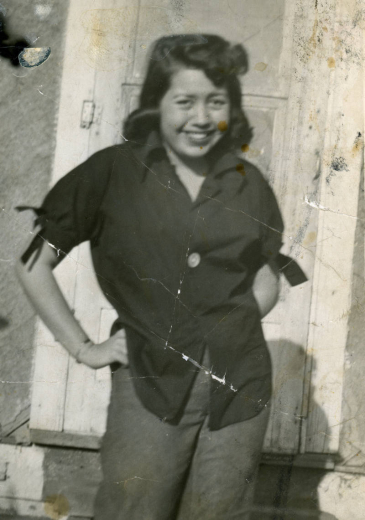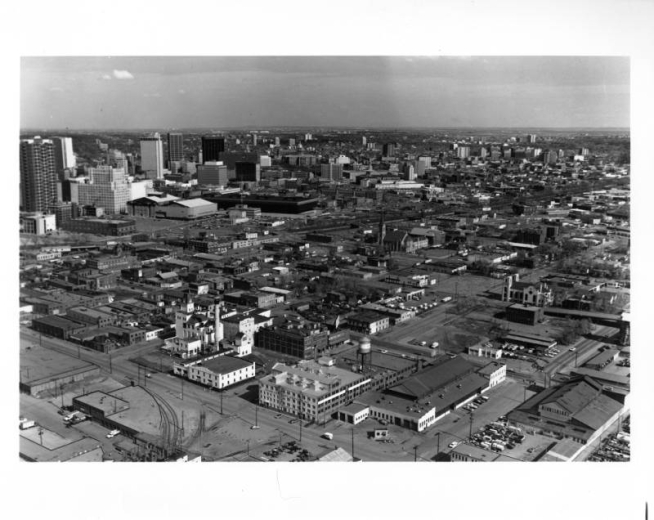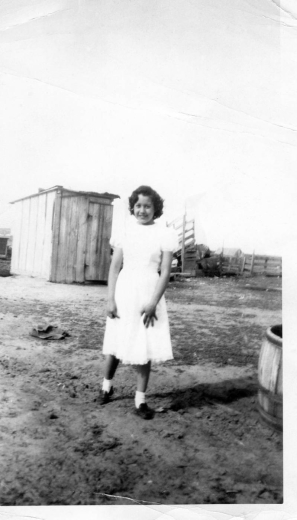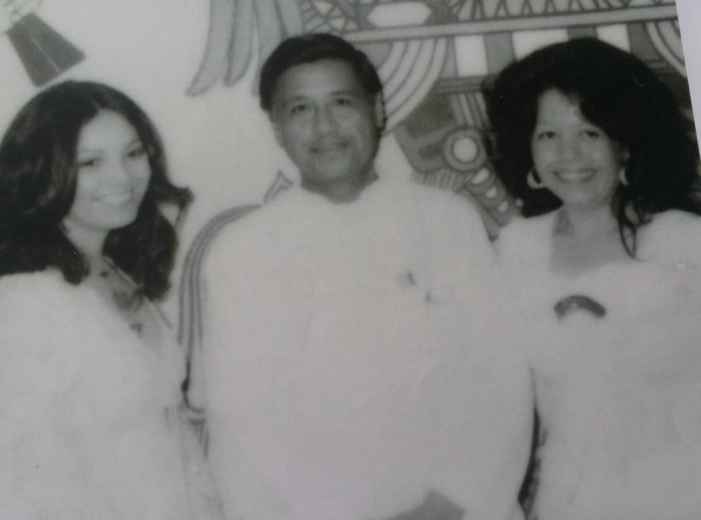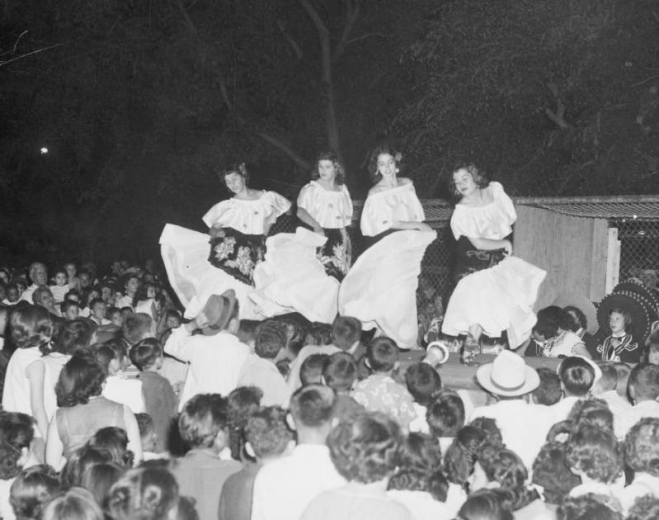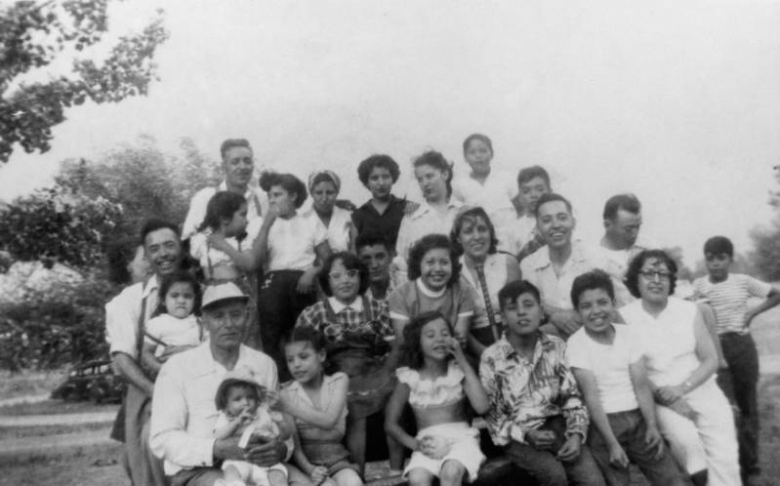Magdalena Gallegos grew up in the neighborhood of Auraria and worked throughout her life to preserve the history and stories from that community.
The part of Denver just west of downtown now known as the Auraria Campus used to be a thriving residential neighborhood. Originally, the Cheyenne and Arapaho tribes would regularly set up camp in the area along the Platte River where it met Cherry Creek. As Americans from the eastern U.S. began flooding into Colorado during the 1850s gold rush, they established a town on the banks of the Platte River. The town was initially named Auraria, but would soon merge with a similar town just north of Cherry Creek to become the town of Denver. The town of Auraria became the Denver neighborhood Auraria. In the 1800s, many of the people who settled there were immigrants from Central and Eastern Europe. By the 1920s, Latinos began to move to the area from Southern Colorado, New Mexico, and Mexico, where a revolution had taken place in 1910.
Magdalena Gallegos was born on July 12, 1935. Her home was 943 ½ 10th Street in Auraria. It was the same home that her grandmother had lived in since 1929, and four generations of her family would live there by 1965. Her family attended church nearby at Saint Cajetan’s, where she also attended Catholic school as a child. After middle school, she went to Saint Joseph’s High School and graduated in 1953. In 1955, Magdalena got married and together they had four children.
Before moving to Auraria in the 1930s, Magdalena’s parents had worked in Northern Colorado as farm workers. Magdalena knew such work to be hard, but honest, and she respected those whose labor provides food for the rest of us. In the 1960s, a union called the United Farm Workers (UFW) began organizing in places like California to put an end to child labor and end the use of dangerous pesticides. In 1973, the UFW was in a struggle against giant wine and vegetable producers who employed many farm workers. People all across the country joined marches and boycotts against these companies in support of the UFW.
After church one Sunday, Father Jose Lara invited Magdalena and others to join him to do some “community service.” The group met up with others who were protesting liquor stores that sold wines produced by Gallo Wines because the company was fighting the efforts of the farm workers. She decided to join the group and ended up meeting more community activists who supported the farm workers. Magdalena continued to participate in the movement and gained many life-long friendships. At one point, she and her friend Louisa Vigil ended up meeting Cesar Chavez, president of the United Farm Workers. Such experiences made her value the community she grew up in even more.
At the same time that Magdalena was involved in community activism, the Auraria community she grew up in was disappearing. In the late 1960s, the City of Denver decided to build a college campus near downtown and decided to put it on the land where Auraria stood. By 1972, all residents were moved elsewhere and, by 1976, a campus stood where Magdalena’s neighborhood had been. During this same period, Magdalena went through a divorce and ended up raising her two youngest children on her own.
Though this period was difficult for her, Magdalena had always dreamed of going to college. In 1980, she started her education at the University of Colorado Denver, on the campus that had previously been her neighborhood. She got straight A's throughout her first year, and in 1981, she also took an oral history class that would change the course of her life. For that class, she decided to interview former residents of Auraria, including her grandmother, and she wrote a paper based on those interviews.
In 1984, Magdalena graduated with her bachelor’s degree from UCD. She got a job working as a counselor for students on the campus, but history remained a passion of hers. She had enjoyed both interviewing Auraria residents and writing about them, and wanted to do more of this kind of work. A well-known local historian and CU Professor, Tom Noel, introduced her to the editor of a local history magazine published by the state historical society. In 1985, Colorado Heritage Magazine published her history of the Auraria community.
Year after year, she continued to write. In 1985, she published a short story called, “The Swallowtail Butterfly.” She also published regularly in a community newspaper called The Urban Spectrum, and through this paper, she became the first Latina theater critic in Denver. In the 1990s, Magdalena and her second husband John O. Mitchell started their own publication, Southwest Magazine, that focused on minority experiences in the region. Her husband died in 1999 and she was no longer able to publish the magazine, but she remained active in writing and history.
The same year her husband John died, a professor at Metropolitan State University of Denver gathered up all Magdalena’s writings and was able to get them published in the Dictionary of Literary Biography. She also wrote her first play “Suenos” in 2003 and saw it performed at El Centro Su Teatro. The following year she began writing for El Semanario newspaper. Even after struggling with breast cancer, Magdalena continued writing and engaging in her community until her death in 2021. The year before her death, she even wrote a piece for the Denver Public Library about her experience in the 1970s with the United Farm Workers movement. Gallegos touched many lives in Denver and she will be remembered fondly by many.
gold rush - large numbers of people coming to a place after gold is discovered there, in hopes of getting rich
boycott - refusing to buy products from a particular company as a form of protest against their policies
oral history - talking to people and recording their memories of specific times, places, and/or events
What do you think will be important for people in the future to remember about your community?
Do you like to talk to older people about things they remember about the past? What kind of things have you learned from them?
Why do you think Magdalena wanted to preserve the history of a neighborhood that no longer exists?

